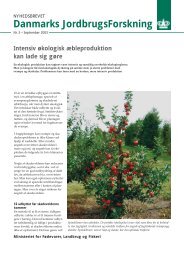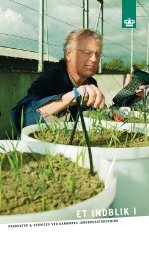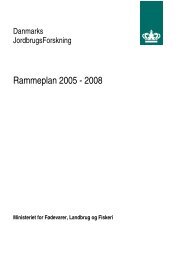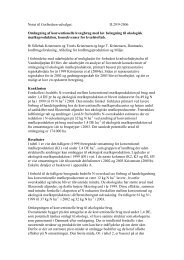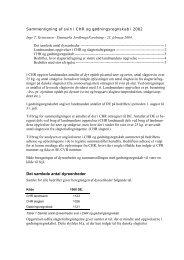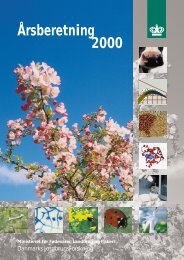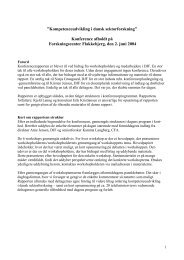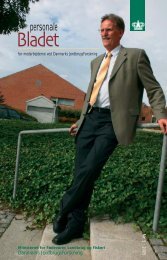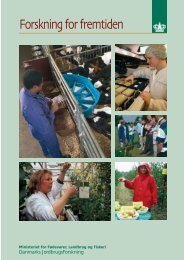Reproduction performances and conditions of group-housed non ...
Reproduction performances and conditions of group-housed non ...
Reproduction performances and conditions of group-housed non ...
You also want an ePaper? Increase the reach of your titles
YUMPU automatically turns print PDFs into web optimized ePapers that Google loves.
- General discussion -<br />
GENERAL DISCUSSION<br />
The specific aims <strong>of</strong> this thesis were 1) to identify important causes for impaired reproduction<br />
performance in <strong>group</strong> <strong>housed</strong> sows <strong>and</strong> 2) to define <strong>and</strong> evaluate indicators suitable for<br />
use in decision-making to improve the reproduction performance <strong>of</strong> commercial herds with<br />
<strong>group</strong> <strong>housed</strong> sows.<br />
Based upon a review study, the hypotheses put forward were: 1) individual variation in energy<br />
intake as well as fear <strong>and</strong> social stress might be important causes for impaired reproduction<br />
performance in <strong>group</strong> <strong>housed</strong> <strong>non</strong>-lactating sows, <strong>and</strong> 2) back fat, skin lesions <strong>and</strong><br />
behavioural measurements might be indicators <strong>of</strong> these characteristics, suitable to express<br />
variation in sows’ reproduction performance under practical <strong>conditions</strong>.<br />
The results <strong>of</strong> the detailed farm study, including 14 commercial herds, supported that <strong>group</strong><br />
housing may lead to individual variation in feed intake severe enough to impair pregnancy<br />
rate <strong>and</strong> perhaps also litter size (Paper IV). The 14 herds were chosen to represent different<br />
layouts <strong>and</strong> management routines to ensure that any relation found could be transferred to a<br />
broad spectrum <strong>of</strong> herds. For the 554 sows followed, a significantly (P=0.02), positive correlation<br />
between back fat gain <strong>and</strong> chance <strong>of</strong> pregnancy was found <strong>and</strong> further a tendency<br />
(P=0.08) to a positive correlation between back fat gain <strong>and</strong> litter size. The modelled relations<br />
indicate that a sow with a negative back fat gain <strong>of</strong> 0.5 mm per week has 5 percentage<br />
points lower chance <strong>of</strong> pregnancy after first mating <strong>and</strong> 0.6 fewer born piglets per litter<br />
compared to a sow with a positive back fat gain <strong>of</strong> 0.5 mm per week. In addition, it was<br />
found that sows eating less than 20% <strong>of</strong> all observations three weeks after mating had a<br />
significantly (P




